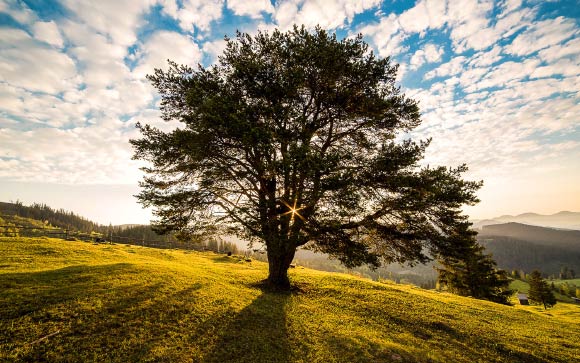According to a new study published today in Nature, there are 3,041 billion trees on our planet, but over 15 billion trees are cut down each year, and the global number of trees has fallen by 46 percent since the start of human civilization.

Scientists estimate that about 1.39 trillion trees exist in tropical and subtropical forests, 0.74 trillion in boreal regions and 0.61 trillion in temperate regions.
“Trees are among the most prominent and critical organisms on Earth, yet we are only recently beginning to comprehend their global extent and distribution,” said the study’s lead author Dr Thomas Crowther of Yale University.
The study was inspired by a request by Plant for the Planet, a global youth initiative that leads the U.N. Environment Programme’s ‘Billion Tree Campaign.’
In 2013, the group approached Dr Crowther asking for baseline estimates of tree numbers at regional and global scales so they could better evaluate the contribution of their efforts and set targets for future tree-planting initiatives.
At the time, the only global estimate was 400.25 billion trees worldwide. That prediction was generated using satellite imagery and estimates of forest area, but did not incorporate any information from the ground.
The new study used a combination of approaches to reveal that there are 3.041 trillion trees – roughly 422 trees per person.
Dr Crowther and co-authors collected tree density information from more than 400,000 forest plots around the world.
Using satellite imagery, they were then able to assess how the number of trees in each of those plots is related to local characteristics such as climate, topography, vegetation, soil condition, and human impacts.
The highest densities of trees were found in the boreal forests in the sub-arctic regions of Siberia, Scandinavia, and North America.
But the largest forest areas, by far, are in the tropics, which are home to about 43 percent of the world’s trees.

The global map of tree density at the 1-km2 pixel scale; the scale refers to the number of trees in each pixel. Scientists highlight the map predictions for two areas – South American Andes, left, and Sardinia, and include the corresponding images for visual comparison. Image credit: T.W. Crowther et al., adapted by Sci-News.com.
The results illustrate how tree density changes within forest types. The scientists found that climate can help predict tree density in most biomes. In wetter areas, for instance, more trees are able to grow. However, the positive effects of moisture were reversed in some regions because humans typically prefer the moist, productive areas for agriculture.
“In fact, human activity is the largest driver of tree numbers worldwide,” Dr Crowther said.
“While the negative impact of human activity on natural ecosystems is clearly visible in small areas, the study provides a new measure of the scale of anthropogenic effects, highlighting how historical land use decisions have shaped natural ecosystems on a global scale.”
In short, tree densities usually plummet as the human population increases. Deforestation, land-use change, and forest management are responsible for a gross loss of over 15 billion trees each year.
“We’ve nearly halved the number of trees on the planet, and we’ve seen the impacts on climate and human health as a result. This study highlights how much more effort is needed if we are to restore healthy forests worldwide,” Dr Crowther concluded.
_____
T.W. Crowther et al. Mapping tree density at a global scale. Nature, published online September 02, 2015; doi: 10.1038/nature14967







